The Endocrine System Chart: Understanding Hormones and Their Functions
How does the endocrine system control bodily functions. What are the main hormones produced by various glands. Which hormones regulate metabolism, growth, and reproduction. What is the role of the pituitary gland in hormone production. How do adrenal glands contribute to homeostasis.
The Intricate Network of the Endocrine System
The endocrine system is a complex network of glands and hormones that plays a crucial role in maintaining the body’s internal balance, or homeostasis. This remarkable system influences numerous bodily functions, including metabolism, growth, reproduction, and stress response. By understanding the various components of the endocrine system and their functions, we can gain valuable insights into how our bodies operate and maintain optimal health.
Pituitary Gland: The Master Conductor of Hormones
Often referred to as the “master gland,” the pituitary gland is a small but powerful component of the endocrine system. Located at the base of the brain, this gland produces and secretes several hormones that regulate various bodily functions and stimulate other endocrine glands to produce their own hormones.
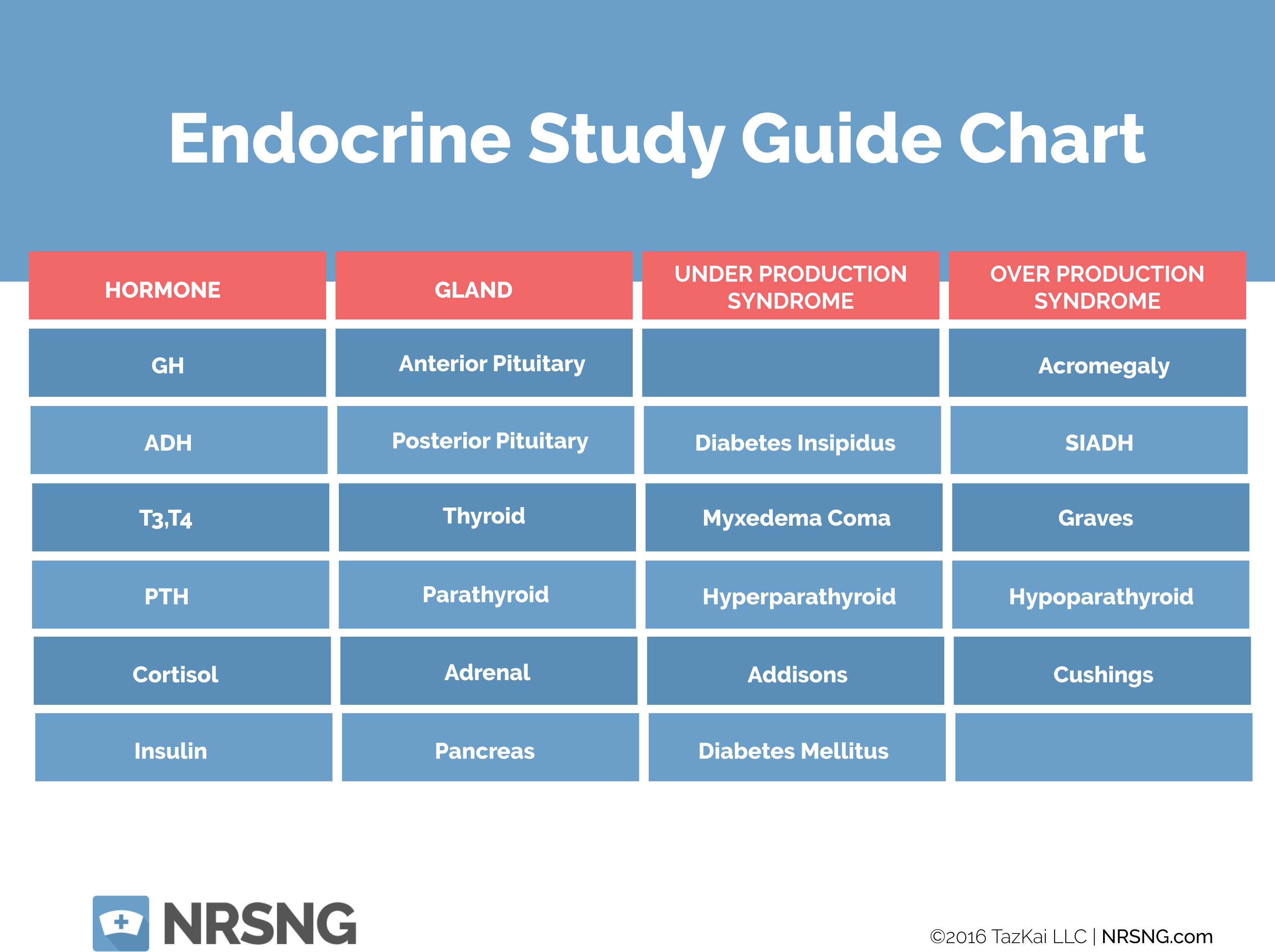
Key Hormones Produced by the Pituitary Gland
- Antidiuretic hormone (ADH or vasopressin): Regulates water retention in the kidneys and controls blood pressure
- Adrenocorticotropic hormone (ACTH): Stimulates the production of cortisol by the adrenal glands
- Growth hormone (GH): Promotes growth and development, stimulates protein production, and affects fat distribution
- Luteinizing hormone (LH) and follicle-stimulating hormone (FSH): Control the production of sex hormones and reproductive cells in both men and women
- Oxytocin: Stimulates uterine contractions during childbirth and milk ejection during breastfeeding
- Prolactin: Initiates and maintains milk production in the breasts
- Thyroid-stimulating hormone (TSH): Stimulates the thyroid gland to produce thyroid hormones
How does the pituitary gland’s function impact overall health? The pituitary gland’s diverse hormone production affects numerous bodily systems, making it essential for maintaining overall health and well-being. Disorders of the pituitary gland can lead to a wide range of symptoms and health issues, highlighting its importance in the endocrine system.

Adrenal Glands: The Stress Responders
The adrenal glands, located atop each kidney, play a vital role in the body’s stress response and homeostasis. These glands produce several hormones that help regulate metabolism, blood pressure, and the body’s reaction to stress.
Hormones Secreted by the Adrenal Glands
- Aldosterone: Regulates salt and water balance, influencing blood pressure
- Corticosteroids: Control various bodily functions, act as anti-inflammatory agents, maintain blood sugar levels, and regulate salt and water balance
- Epinephrine (adrenaline): Increases heart rate, oxygen intake, and blood flow during stress
- Norepinephrine: Helps maintain blood pressure
Why are the adrenal glands crucial for stress management? The adrenal glands’ production of stress hormones like epinephrine and cortisol enables the body to respond quickly and effectively to stressful situations. This “fight or flight” response is essential for survival and short-term adaptation to challenging environments.
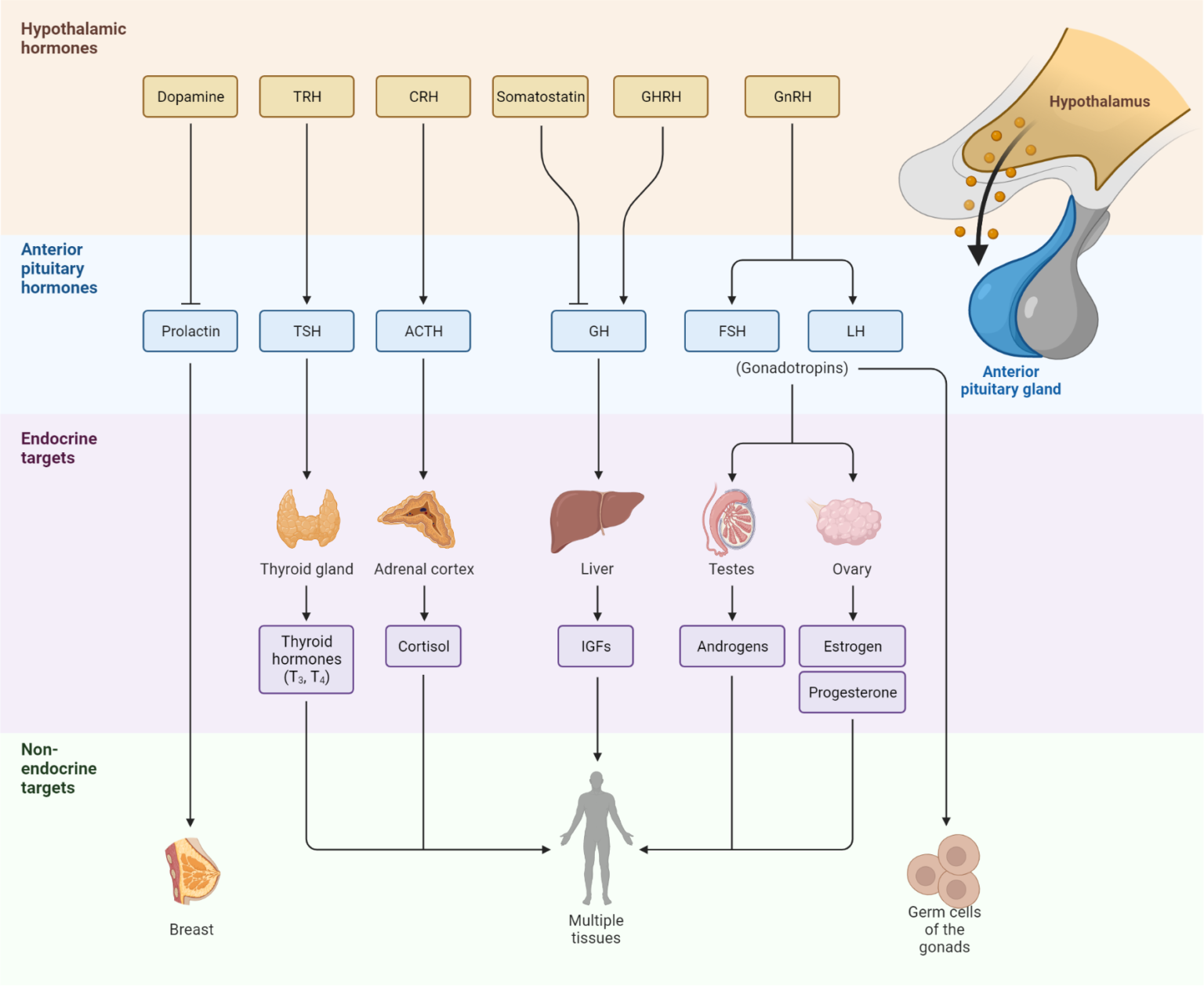
Thyroid Gland: The Metabolic Regulator
The thyroid gland, a butterfly-shaped organ located in the neck, produces hormones that are essential for regulating metabolism, growth, and development. Thyroid hormones influence nearly every cell in the body, making this gland a critical component of the endocrine system.
What is the primary function of thyroid hormones? Thyroid hormones, primarily thyroxine (T4) and triiodothyronine (T3), control the body’s metabolic rate, affecting how quickly cells convert nutrients into energy. These hormones also play crucial roles in heart rate, body temperature, and brain development.
Pancreas: The Blood Sugar Balancer
The pancreas serves as both an endocrine and exocrine gland, producing hormones that regulate blood sugar levels and enzymes that aid in digestion. As part of the endocrine system, the pancreas secretes two primary hormones: insulin and glucagon.
Pancreatic Hormones and Their Functions
- Insulin: Lowers blood sugar levels by stimulating the uptake of glucose into cells and promoting its storage as glycogen
- Glucagon: Raises blood sugar levels by promoting the breakdown of glycogen into glucose and stimulating glucose production in the liver
How do insulin and glucagon work together to maintain blood sugar balance? Insulin and glucagon act as opposing forces to keep blood sugar levels within a healthy range. When blood sugar rises, the pancreas releases insulin to lower it. Conversely, when blood sugar drops, glucagon is released to raise it. This delicate balance is crucial for maintaining energy levels and overall health.

Reproductive Glands: Orchestrators of Sexual Development and Function
The reproductive glands, which include the ovaries in females and testes in males, play essential roles in sexual development, reproduction, and the maintenance of secondary sexual characteristics.
Ovarian Hormones
- Estrogen: Promotes the development of female sexual characteristics, regulates the menstrual cycle, and supports bone health
- Progesterone: Prepares the uterus for pregnancy and the breasts for milk production
Testicular Hormones
- Testosterone: Promotes the development of male sexual characteristics, stimulates sperm production, and influences muscle mass and bone density
How do reproductive hormones influence sexual development and function throughout life? Reproductive hormones guide sexual development during puberty, regulate fertility and reproductive functions during adulthood, and influence various aspects of health and well-being throughout life. Changes in these hormone levels can significantly impact sexual function, mood, and overall health.
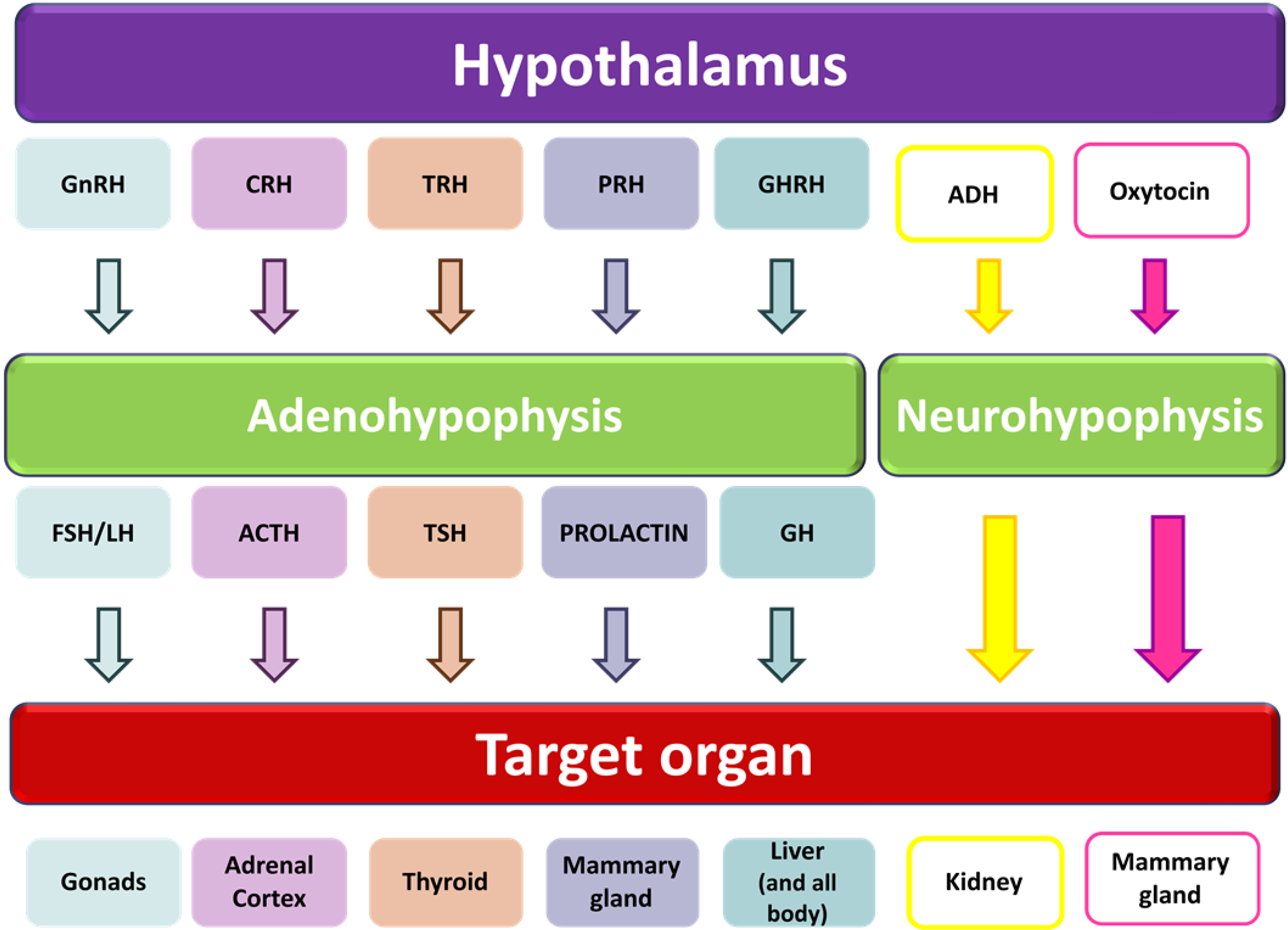
Parathyroid Glands: Guardians of Calcium Balance
The parathyroid glands, four small glands located behind the thyroid, produce parathyroid hormone (PTH), which plays a crucial role in regulating calcium levels in the blood and bones.
Why is calcium balance so important for the body? Calcium is essential for numerous bodily functions, including muscle contraction, nerve signaling, and bone health. PTH helps maintain optimal calcium levels by promoting calcium absorption from the intestines, reabsorption in the kidneys, and release from bones when blood calcium levels are low.
The Kidneys: Unexpected Endocrine Players
While primarily known for their role in filtering blood and producing urine, the kidneys also function as endocrine organs, producing hormones that regulate blood pressure and red blood cell production.
Kidney-Produced Hormones
- Renin: Initiates a cascade of events that leads to the production of angiotensin, which regulates blood pressure
- Erythropoietin: Stimulates the production of red blood cells in the bone marrow
How do the kidneys contribute to overall endocrine function? The kidneys’ endocrine functions highlight the interconnected nature of the body’s systems. By producing hormones that regulate blood pressure and red blood cell production, the kidneys play a vital role in maintaining cardiovascular health and oxygen delivery throughout the body.

The endocrine system’s intricate network of glands and hormones works tirelessly to maintain balance within the body. From regulating metabolism and growth to controlling reproduction and stress responses, hormones influence virtually every aspect of human physiology. Understanding this complex system not only provides insights into how our bodies function but also emphasizes the importance of maintaining hormonal balance for overall health and well-being.
As research in endocrinology continues to advance, we gain new insights into the subtle ways hormones influence our health, behavior, and quality of life. This knowledge opens up exciting possibilities for developing targeted treatments for hormonal disorders and improving our ability to maintain optimal endocrine function throughout our lives.
By appreciating the complexity and importance of the endocrine system, we can make informed decisions about our health and lifestyle choices that support hormonal balance. Whether it’s managing stress, maintaining a healthy diet, or seeking appropriate medical care for endocrine-related issues, understanding the role of hormones in our bodies empowers us to take proactive steps towards better health and well-being.
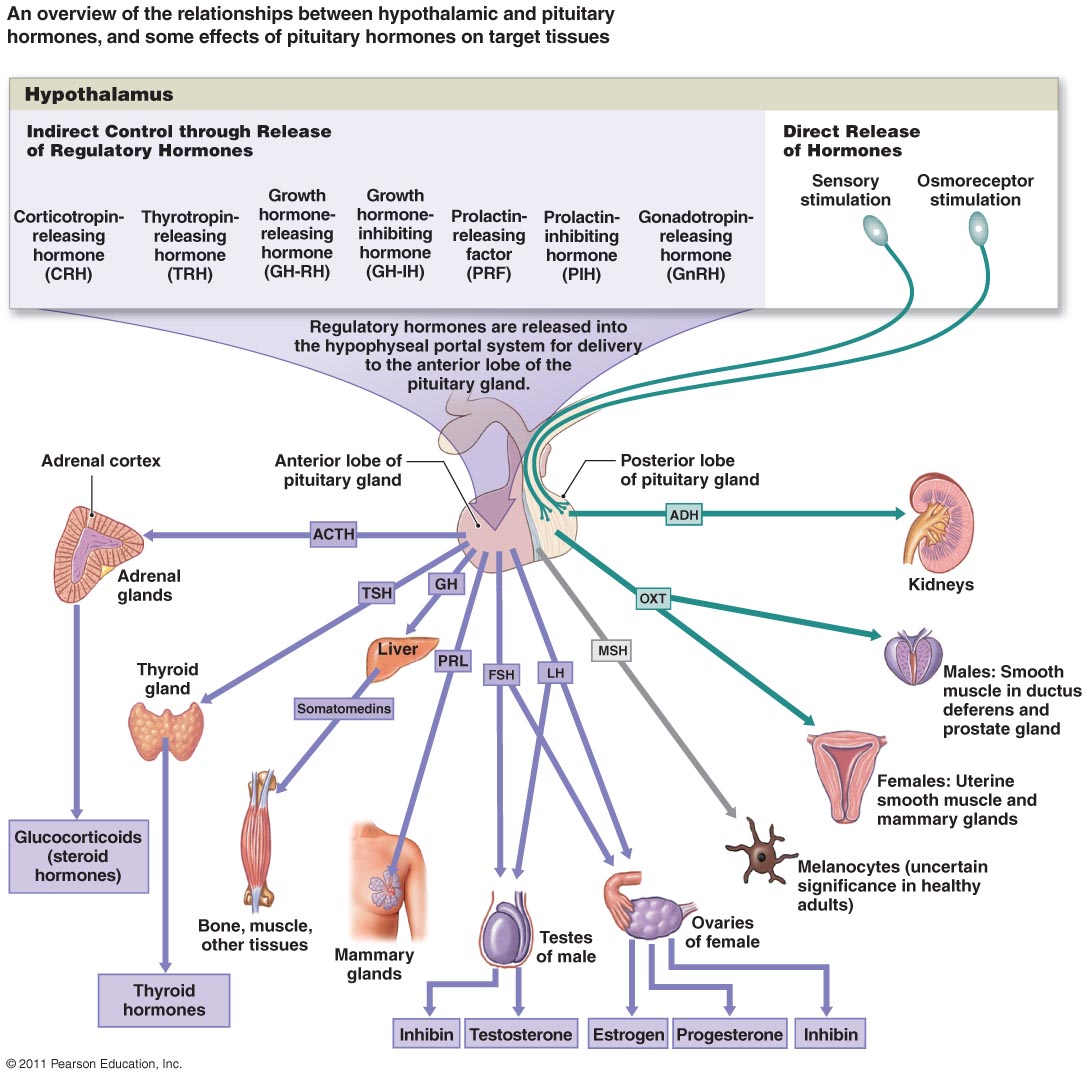
Hormones and the Endocrine System
The endocrine system uses hormones to control and coordinate your body’s internal metabolism (or homeostasis) energy level, reproduction, growth and development, and response to injury, stress, and environmental factors. Consider the following hormones and their role in the workings of the endocrine system:
Where the hormone is produced | Hormone(s) secreted | Hormone function |
|---|---|---|
Adrenal glands | Aldosterone | Regulates salt, water balance, and blood pressure |
Adrenal glands | Corticosteroid | Controls key functions in the body; acts as an anti-inflammatory; maintains blood sugar levels, blood pressure, and muscle strength; regulates salt and water balance |
Pituitary gland | Antidiuretic hormone (vasopressin) | Affects water retention in kidneys; controls blood pressure |
Pituitary gland | Adrenocorticotropic hormone (ACTH) | Controls production of sex hormones (estrogen in women and testosterone in men) and the production of eggs in women and sperm in men. |
Pituitary gland | Growth hormone (GH) | Affects growth and development; stimulates protein production; affects fat distribution |
Pituitary gland | Luteinizing hormone (LH) and follicle-stimulating hormone (FSH) | Controls production of sex hormones (estrogen in women and testosterone in men) and the production of eggs in women and sperm in men |
Pituitary gland | Oxytocin | Stimulates contraction of uterus and milk ducts in the breast |
Pituitary gland | Prolactin | Initiates and maintains milk production in breasts; impacts sex hormone levels |
Pituitary gland | Thyroid-stimulating hormone (TSH) | Stimulates the production and secretion of thyroid hormones |
Kidneys | Renin and angiotensin | Controls blood pressure, both directly and also by regulating aldosterone production from the adrenal glands |
Kidneys | Erythropoietin | Affects red blood cell (RBC) production |
Pancreas | Glucagon | Raises blood sugar levels |
Pancreas | Insulin | Lowers blood sugar levels; stimulates metabolism of glucose, protein, and fat |
Ovaries | Estrogen | Affects development of female sexual characteristics and reproductive development, important for functioning of uterus and breasts; also protects bone health |
Ovaries | Progesterone | Stimulates the lining of the uterus for fertilization; prepares the breasts for milk production |
Parathyroid glands | Parathyroid hormone (PTH) | Most important regulator of blood calcium levels |
Thyroid gland | Thyroid hormone | Controls metabolism; also affects growth, maturation, nervous system activity, and metabolism |
Adrenal glands | Epinephrine | Increases heart rate, oxygen intake, and blood flow |
Adrenal glands | Norepinephrine | Maintains blood pressure |
Testes (testicles) | Testosterone | Develop and maintain male sexual characteristics and maturation |
Pineal gland | Melatonin | Releases melatonin during night hours to help with sleep |
Hypothalamus | Growth hormone releasing hormone (GHRH) | Regulates growth hormone release in the pituitary gland |
Hypothalamus | Thyrotropin releasing hormone (TRH) | Regulates thyroid stimulating hormone release in the pituitary gland |
Hypothalamus | Gonadotropin releasing hormone (GnRH) | Regulates LH/FSH production in the pituitary gland |
Hypothalamus | Corticotropin releasing hormone (CRH) | Regulates adrenocorticotropin release in the pituitary gland |
Thymus | Humoral factors | Helps develop the lymphoid system |
Endocrine System Anatomical Chart
9781587790164
Anatomical Chart Company
ISBN/ISSN:
9781587790164
9781587790164
This useful chart of The Endocrine System shows the location of glands on the body. Each gland is seperately illustrated …
Each gland is seperately illustrated …
Read More
-
Questions and Answers
-
Product Description
This useful chart of The Endocrine System shows the location of glands on the body. Each gland is seperately illustrated and labeled and the hormones it secrets are listed.
Shows the following glands:
thyroid
parathyroid
thymus
adrenal
pineal
pituitary
Also includes the organs that have a secondary endocrine function producing and releasing hormones. The heart, kidney, stomach, duodenum, jejunum, pancreas, ovary, placenta, and testes and the hormones they secret are shown.
Made in the USA.
Available in the following versions :- 20″ x 26″ heavy paper laminated with grommets at top corners ISBN 9781587790157
- 20″ x 26″ heavy paper ISBN 9781587790164
-
SpecsISBN/ISSN
9781587790164
Product Format
Paper
Trim Size
20 x 26
Table
Weight
0.
 15
15 -
- Anatomical Chart Company
$
14. 99
99
USD $14.99
Quantity:
MORE OPTIONS
REQUEST REVIEW COPY
REQUEST PERMISSIONS
Item already added to cart.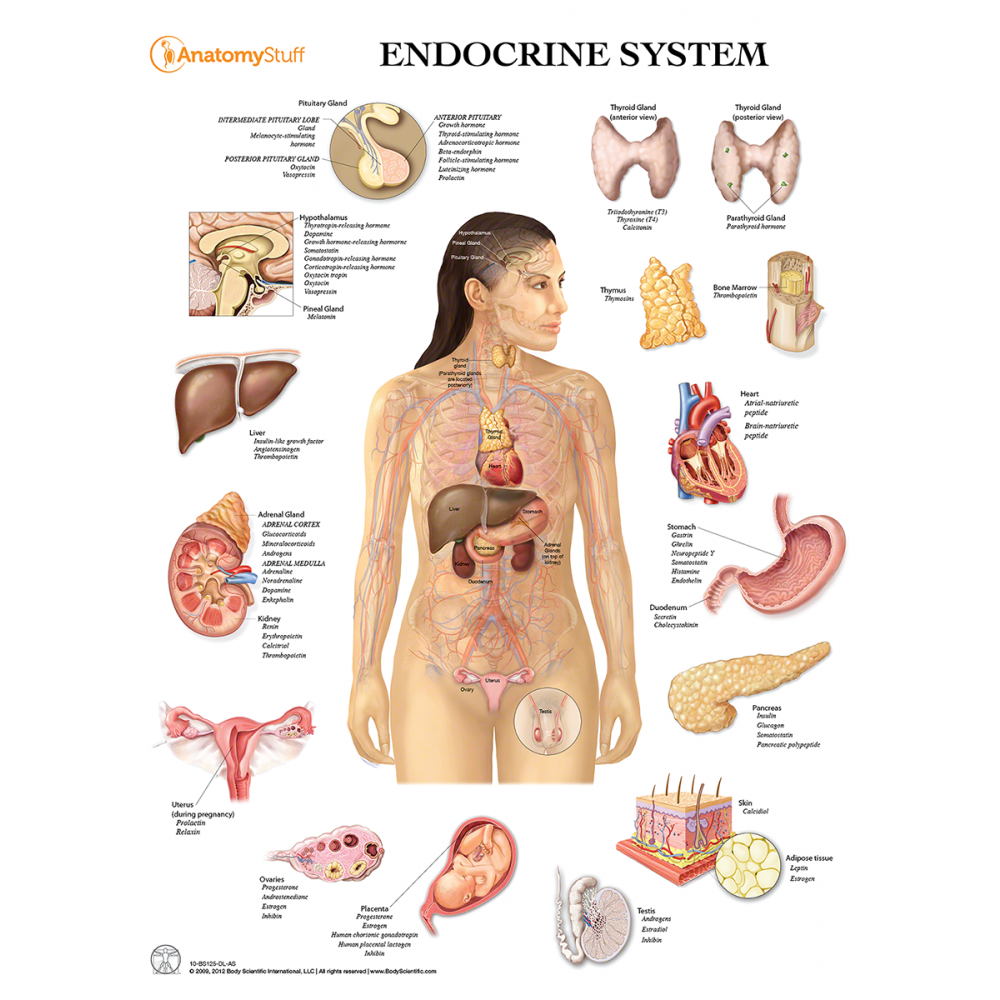
Buy from another retailer
Customer reviews
Overall: out of 5
9781587790164
Endocrine System Anatomical Chart
9781587790164
Home / Medicine / Endocrine System Anatomical Chart
1
https://shop.lww.com/endocrine-system-anatomical-chart/p/9781587790164
//cdn-tp2.mozu.com/16833-25855/cms/25855/files/53a0d370-52da-4d70-975c-f3899eeb3c22
14.99
14.99
14.99
1
Which nervous system regulates the work of the endocrine system
The human body is a complex mechanism. Its cells, tissues and organs must work harmoniously and harmoniously. This condition is ensured by the work of two signaling systems: endocrine and nervous. Their interconnection provides several important conditions:
- homeostasis – the body’s ability to maintain constant characteristics;
- adaptation – the ability to change some factors of the internal environment depending on changes in external conditions;
- cell growth;
- reproduction.

The nervous system is a collection of organs that provide innervation to all organs and tissues. Its central section includes the brain and spinal cord, and the peripheral section includes the nerves. Information is captured by receptors, then moves in the form of impulses through nerve cells and reaches the brain. It provides a quick reaction in the form of muscle movement or other response to a stimulus. Also, the nervous system regulates the work of the endocrine system, controlling the intensity of hormone production.
The endocrine system is a collection of glands that secrete hormones into the blood. It includes the hypothalamus, pituitary gland, as well as peripheral glands: thyroid, pancreas, genital, adrenal glands. Hormones are biologically active substances that combine with the cells of various organs and can change their work, speed up or slow down biochemical processes in the body.
To understand which nervous system regulates the work of the endocrine system, you need to track the relationship. It is called “neuroendocrine regulation” and consists in controlling the production of hormones by the endocrine glands. This process is ensured by the work of several structures: the hypothalamus, neurotransmitter hormones, and the adrenal medulla.
It is called “neuroendocrine regulation” and consists in controlling the production of hormones by the endocrine glands. This process is ensured by the work of several structures: the hypothalamus, neurotransmitter hormones, and the adrenal medulla.
The role of the hypothalamus
The hypothalamus is a small area of the diencephalon, which is considered the center of neuroendocrine regulation. It is connected with other parts of the nervous system, the brain and spinal cord. Together with the pituitary gland, it forms the hypothalamic-pituitary system and regulates the intensity of the production of its hormones.
The hypothalamus receives signals from the following structures:
- basal nuclei (ganglia) – accumulations of gray matter in the white matter of the brain;
- spinal cord;
- parts of the brain: oblong, middle, thalamus, as well as some parts of the cerebral hemispheres.
The hypothalamus is the center that accumulates data from the whole organism, as well as from the external environment. Nerve cells of the hypothalamus are able to produce several types of neuroendocrine transmitters – biologically active substances that affect the intensity of the synthesis of tropic pituitary hormones:
Nerve cells of the hypothalamus are able to produce several types of neuroendocrine transmitters – biologically active substances that affect the intensity of the synthesis of tropic pituitary hormones:
- Liberins – a group of compounds that stimulate hormonal synthesis. So, somatoliberin increases the production of somatotropic growth hormone, thyreoliberin – thyrotropic, gonadoliberin – luteinizing and follicle-stimulating hormones.
- Statins are substances that suppress the production of tropic hormones by the pituitary gland. There are varieties such as somatostatin, prolactostatin, melanostatin.
- Oxytocin and vasopressin are hormones produced by the hypothalamus but stored in the posterior pituitary gland. The first increases during childbirth and causes contraction of the muscular wall of the uterus, but also performs other functions. Vasopressin regulates water metabolism, increases vascular tone.
Hormones of the hypothalamus enter the pituitary gland through the bloodstream and influence its functions there. Statins and liberins do not always act strictly selectively. So, somatostatin can suppress the production of not only somatotropin, but also thyrotropic hormone, insulin and prolactin.
Statins and liberins do not always act strictly selectively. So, somatostatin can suppress the production of not only somatotropin, but also thyrotropic hormone, insulin and prolactin.
Nervous regulation of the adrenal glands
Adrenal glands are paired glands, which in humans are located in the region of the upper pole of the kidneys. In their structure, two components are distinguished: cortical and medulla. The cortex performs an endocrine function and produces hormones into the blood, and the medulla is an intermediate link between the nervous and endocrine systems.
One of the functions of the adrenal medulla is the production of catecholamines. This is a group of biologically active compounds that includes epinephrine and norepinephrine. They are activated to the maximum in stressful situations, when it is urgent to bring the body into tone, and trigger a number of changes:
- accelerated heartbeat;
- increased vascular tone;
- increase in blood pressure;
- expansion of the bronchial lumen;
- inhibition of the digestive tract and decrease in the secretion of its glands;
- dilated pupils;
- increased activity of sweat glands.

The adrenal medulla has a similar structure to the nervous tissues, since during fetal development it is formed from identical rudiments. Histologically, the cells in this area are deformed neurons of the sympathetic autonomic nervous system, which then transformed into endocrine cells. They are activated under the influence of sympathetic nerve fibers. As a result of their irritation, adrenaline and norepinephrine are released into the bloodstream.
Catecholamines are considered “stress hormones” because their concentration increases in uncomfortable conditions for the body. They are activated during times of pain, exposure to cold, exercise, and muscle fatigue. Also, their increase can be caused by stress, vivid emotions, prolonged mental stress and other factors. The work of the adrenal medulla is controlled by structures such as the cerebral cortex and medulla oblongata, as well as the hypothalamus.
Feedback
In the process of neuroendocrine regulation, a two-way connection is observed. The organs of the endocrine system are under the control of nervous structures that stimulate or inhibit the synthesis of biologically active compounds. However, hormones also affect the central and peripheral parts of the nervous system. Thus, the thyroid gland secretes substances that act directly on the brain, bypassing the complex blood-brain barrier. They are useful for brain tissues, as they stimulate their growth and development, improve mental functions. Adrenaline and norepinephrine can also affect neurons, thereby participating in brain function.
The organs of the endocrine system are under the control of nervous structures that stimulate or inhibit the synthesis of biologically active compounds. However, hormones also affect the central and peripheral parts of the nervous system. Thus, the thyroid gland secretes substances that act directly on the brain, bypassing the complex blood-brain barrier. They are useful for brain tissues, as they stimulate their growth and development, improve mental functions. Adrenaline and norepinephrine can also affect neurons, thereby participating in brain function.
Specialists of the medical center “Yunona” are engaged in diagnosing changes in the nervous and endocrine systems: a neurologist and an endocrinologist. You can make an appointment by calling 8 (831) 225-56-56.
Diagnostics in endocrinology – prices in Moscow at the medical center “SM-Clinic”
The system of neurohumoral regulation (translated as “nerve-fluid control”) is a familiar endocrine system that is quite complex, but extremely important for the normal functioning of the whole organism. The study of the structure of this system, as well as the identification of dysfunctions and the development of methods for treating diseases, is a separate area in medicine – endocrinology.
The study of the structure of this system, as well as the identification of dysfunctions and the development of methods for treating diseases, is a separate area in medicine – endocrinology.
Unfortunately, the pathologies of the endocrine system are diverse and numerous, their course can be unpredictable, and the symptoms are not always obvious. Therefore, it is important to have an idea about the methods of diagnosing endocrine diseases.
Useful information
The endocrine system is a collection of endocrine glands – thyroid, thymus, pancreas, parathyroid glands, pituitary gland, adrenal glands, gonads. The organs, tissues and cells that make up the system produce special organic compounds – bioactive regulators or hormones. Translated from the Greek, the term “hormone” means “induce”, “activate”, which is the best way to explain the functional significance of these compounds.
Hormones affect all processes in the body. Entering directly into the bloodstream, they are captured by sensitive receptors.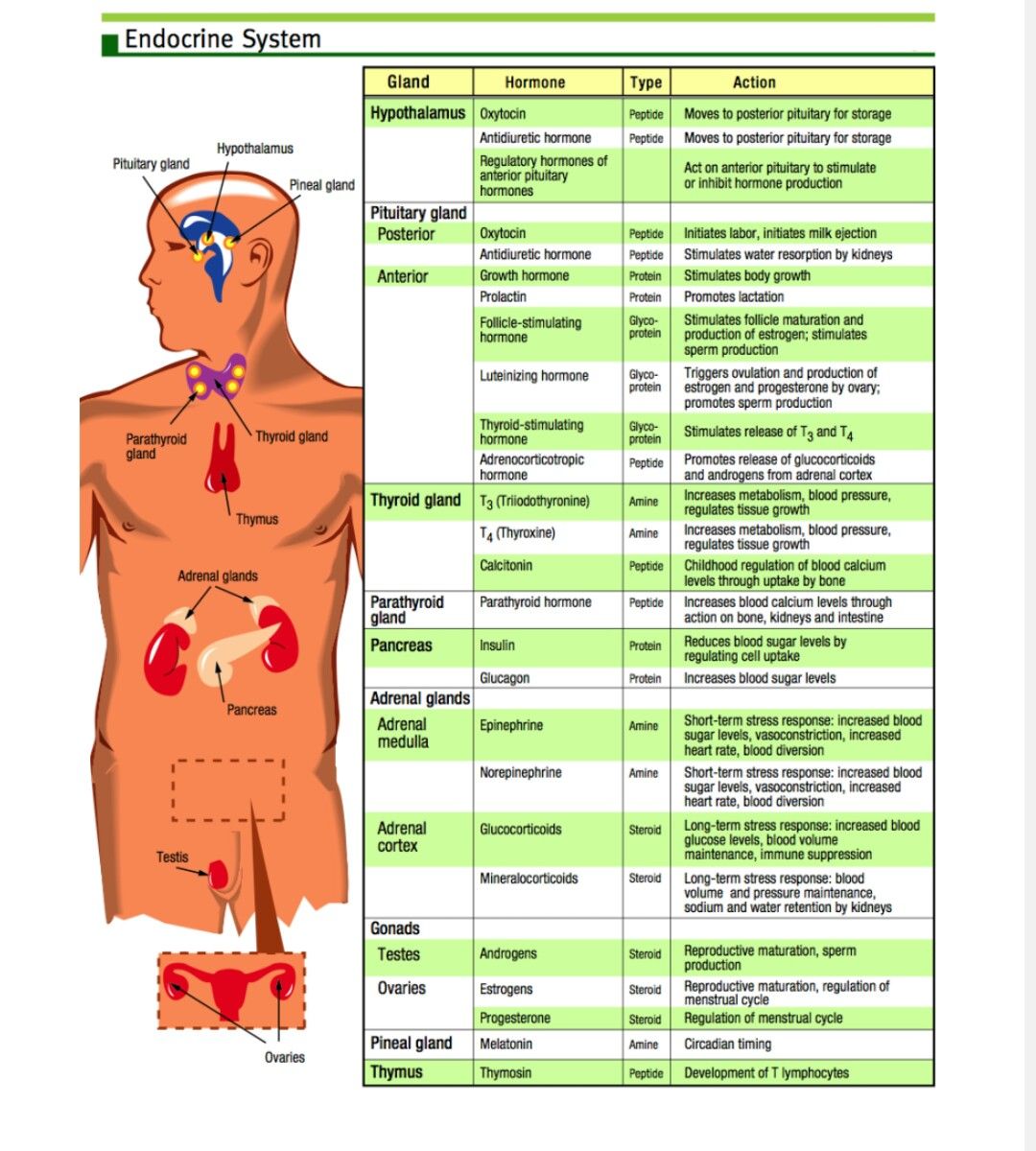 The cells receive a command, and they begin to react: for example, body temperature or blood pressure rises, the intensity of lactogenesis (milk production) increases, etc. In other words, hormones start, slow down or completely stop all physiological and mental processes. At the same time, each gland of the endocrine system produces several hormones, and each hormone affects different processes.
The cells receive a command, and they begin to react: for example, body temperature or blood pressure rises, the intensity of lactogenesis (milk production) increases, etc. In other words, hormones start, slow down or completely stop all physiological and mental processes. At the same time, each gland of the endocrine system produces several hormones, and each hormone affects different processes.
Failures sometimes occur in the endocrine system and pathologies develop, which are characterized by:
- violation of hormone production;
- decrease or increase in their number;
- production of abnormal hormones;
- formation of resistance to hormonal action, violation of the absorption process.
Any such failure can lead to the development of serious diseases. The list of endocrine pathologies is quite wide:
- hypothyroidism – thyroid dysfunction, which is characterized by insufficient production of hormones;
- goiter – hypo- or hyperfunction, accompanied by an increase in the thyroid gland;
- diabetes mellitus – a disease that leads to a violation of metabolic processes, which develops against the background of a lack of insulin;
- thyrotoxicosis – hyperfunction of the thyroid gland;
- hypoparathyroidism – hypofunction of the parathyroid glands;
- hyperparathyroidism – excessive production of the hormone by the parathyroid gland;
- autoimmune thyroiditis – destructive changes in the tissues of the thyroid gland;
- gigantism – excessive production of growth hormone.

Risk factors for the development of endocrine diseases are overweight, low physical activity, unhealthy diet, bad habits, hereditary predisposition.
The most common symptoms of endocrine pathologies:
- tired feeling, muscle weakness;
- sudden weight gain or loss without dietary change;
- palpitations;
- excessive sweating;
- drowsiness;
- memory impairment, scattered attention;
- constant feeling of thirst;
- increased blood pressure;
- frequent urination.
Symptoms of pathologies can be mixed, diseases are often disguised as other ailments. However, modern methods of diagnosing endocrine diseases make it possible to detect deviations with high accuracy.
Examinations are carried out using the latest techniques and equipment. Contact the representatives of the clinic at the specified phone number to make an appointment with an endocrinologist.


 15
15

